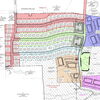Processing Your Payment
Please do not leave this page until complete. This can take a few moments.
- News
-
Editions
-
- Lists
-
Viewpoints
-
Our Events
-
Event Info
- Women's Leadership Forum 2025
- On the Road with Mainebiz in Bethel
- Health Care Forum 2025
- On The Road with Mainebiz in Greenville
- On The Road with Mainebiz in Waterville
- Small Business Forum 2025
- Outstanding Women in Business Reception 2025
- On The Road with Mainebiz in Bath
- 60 Ideas in 60 Minutes Portland 2025
- 40 Under 40 Awards Reception 2025
- On The Road with Mainebiz in Lewiston / Auburn
- 60 Ideas in 60 Minutes Bangor 2025
Award Honorees
- 2025 Business Leaders of the Year
- 2024 Women to Watch Honorees
- 2024 Business Leaders of the Year
- 2023 NextUp: 40 Under 40 Honorees
- 2023 Women to Watch Honorees
- 2023 Business Leaders of the Year
- 2022 NextUp: 40 Under 40 Honorees
- 2022 Women to Watch Honorees
- 2022 Business Leaders of the Year
-
-
Calendar
-
Biz Marketplace
- News
- Editions
- Lists
- Viewpoints
-
Our Events
Event Info
- View all Events
- Women's Leadership Forum 2025
- On the Road with Mainebiz in Bethel
- Health Care Forum 2025
- On The Road with Mainebiz in Greenville
- On The Road with Mainebiz in Waterville
- + More
Award Honorees
- 2025 Business Leaders of the Year
- 2024 Women to Watch Honorees
- 2024 Business Leaders of the Year
- 2023 NextUp: 40 Under 40 Honorees
- 2023 Women to Watch Honorees
- 2023 Business Leaders of the Year
- + More
- 2022 NextUp: 40 Under 40 Honorees
- 2022 Women to Watch Honorees
- 2022 Business Leaders of the Year
- Nomination Forms
- Calendar
- Biz Marketplace
What might negative interest rates mean to Maine?
There's been a lot of guessing about whether the Federal Reserve will proceed with its December plan to raise interest rates four times this year or possibly only two, given the economic turmoil in the first quarter.
Amid the gyrating economy, there nonetheless are some positive signs in inflation and job numbers, notes Jessamyn Norton, a principal and chief investment officer at Spinnaker Trust in Portland. She says that the Fed's mandates to encourage and maintain full employment and get to a healthy inflation level have been largely fulfilled. “The inflation rate in February crept up to 1.6%, which is close to the target inflation rate of 2%,” she says.
Norton expects the Fed to raise its funds rate 0.25% at its June meeting and continue to nudge it up in subsequent meetings. The Fed funds rate is a key economic indicator that is the target interest rate banks charge each other to borrow Fed funds overnight. That rate was increased by the Fed last December for the first time since the financial crisis to 0.25%, a rise that has been blamed for some of the economic worries around the new year. Prior to that, the rate hovered around zero to encourage consumer spending after the 2008 financial crisis.
Negative rates — a panic move?
The Fed funds rate also is being watched closely because central banks in other countries — namely Japan, Denmark, Sweden and Switzerland, as well as those in the eurozone — have moved interest rates into negative territory to jumpstart their economies.
Federal Reserve Chair Janet Yellen told a congressional hearing in February that negative interest rates could be coming to America. “We're taking a look at them … I wouldn't take those off the table,” she said, adding that the U.S. economy would have to get much worse before the Fed would consider that move.
One reason the Fed kept its rate around 0% was to help stoke the economy during and after the 2008 financial crisis. Slashing the rate below zero is a more dire effort to spark spending, some economists say, because it means bank patrons could be charged a penalty fee to keep money in a bank.
“The impact on consumers isn't clear,” says Norton, noting negative interest rates are still a new phenomenon whose impact isn't fully known. “But it suggests desperate moves.”
Warren Buffett has gone so far as to call negative interest rates “an experiment with unknown consequences that distorts valuations.” Others have envisioned scenarios where consumers would prepay years' worth of cable, property taxes or other bills to avoid a money-losing bank account, suggesting an upending of part of the economy as we now know it.
Currently, banks are taking on the cost of the negative interest rates, Norton says, but that in turn has pushed bank stock values in Japan and the eurozone down at a time when U.S. bank balance sheets are stronger than ever.
There is a potential in the future that commercial enterprises may have to take on the cost of negative interest rates, and possibly even consumers, but Norton says banks are trying to avoid this so they don't lose customers. In Japan, where the saving rate is high, there's already a boom in home safes that consumers are buying to avoid potential bank fees.
Norton says the Fed is, for what seems like the first time, looking more carefully at global financial conditions than it had in the past before setting rates.
“Economies are more global than ever,” Norton notes.
She doesn't expect U.S. businesses or consumers, including those in Maine, to have to worry about the advent of negative interest rates, because the banks are regulated more heavily than elsewhere and their balance sheets are in good shape.
Norton does warn that inflation could follow Fed funds rate increases, so she cautions consumers, businesses and others to be wary of variable-rate loans.










Comments